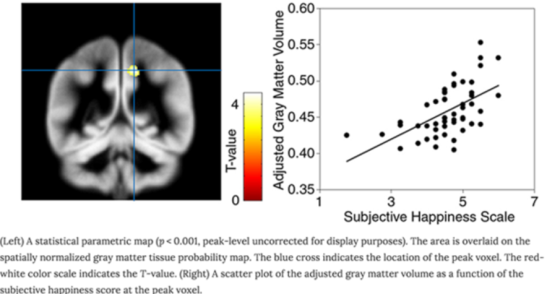Where does happiness exist in the brain? Are the brains of happy people different from those of unhappy people? Researchers from Kyoto University, in a new study published in the journal Scientific Reports, say the precuneus region is larger in people who report more happiness in their lives than in people who aren’t as happy.
In the study, neuroscientists first scanned the brains of 51 participants, 26 of them female, using magnetic resonance imaging (MRI). They then had the participants answer three common questionnaires: the Subjective Happiness Scale, a four-item measure of global subjective happiness; the Emotional Intensity Scale, which assesses the intensity of positive and negative emotions; and the Purpose in Life Test.
They found that the more happiness a subject reported, the larger the volume of gray matter in the precuneus, a lesser-studied region of the brain located in the medial parietal cortex, and tucked in the fissure between the two cerebral hemispheres. Moreover, the more positive emotional intensity and purpose in life a participant reported, the larger the precuneus; the more negative emotional intensity and purpose in life, the smaller.
“Our findings suggest that the precuneus mediates subjective happiness by integrating the emotional and cognitive components of happiness,” they write.
This isn’t the first time certain regions of the brain have been associated with happiness. Previous neuroimaging studies have consistently found, the researchers say, that the induction of happy (as opposed to neutral) emotions activated the anterior cingulate gyrus, amygdala, and medial parietal cortex, where the precuneus is found.
Pinpointing where happiness occurs in the brain will be useful for developing happiness programs based on scientific research.
Lead author Wataru Sato said in a press statement: “Several studies have shown that meditation increases grey matter mass in the precuneus.”
